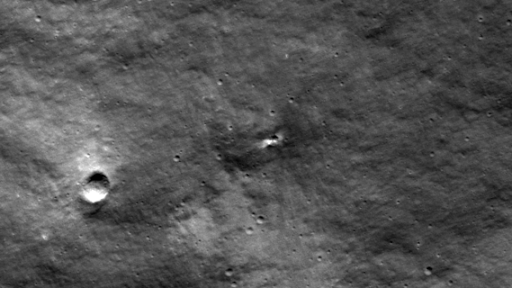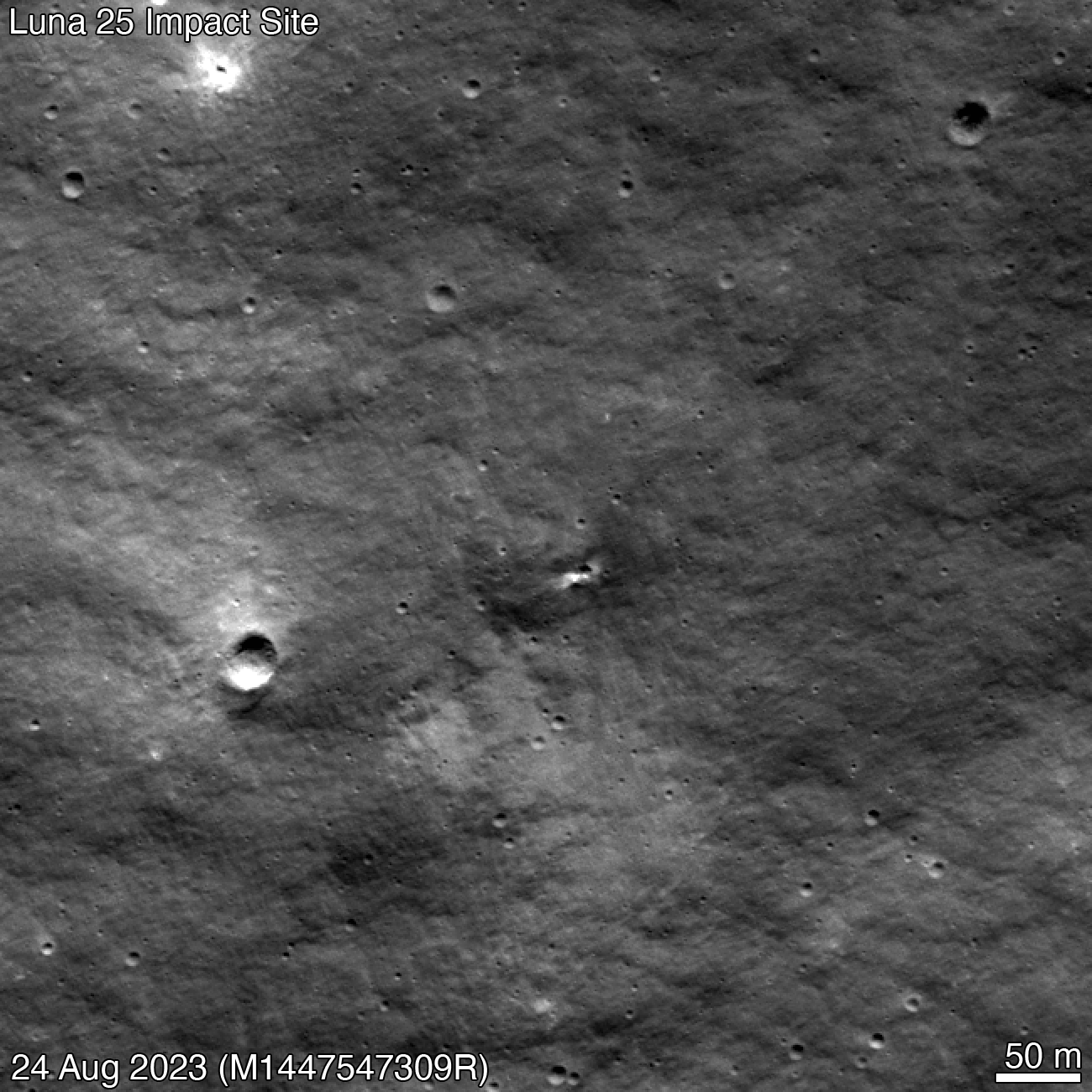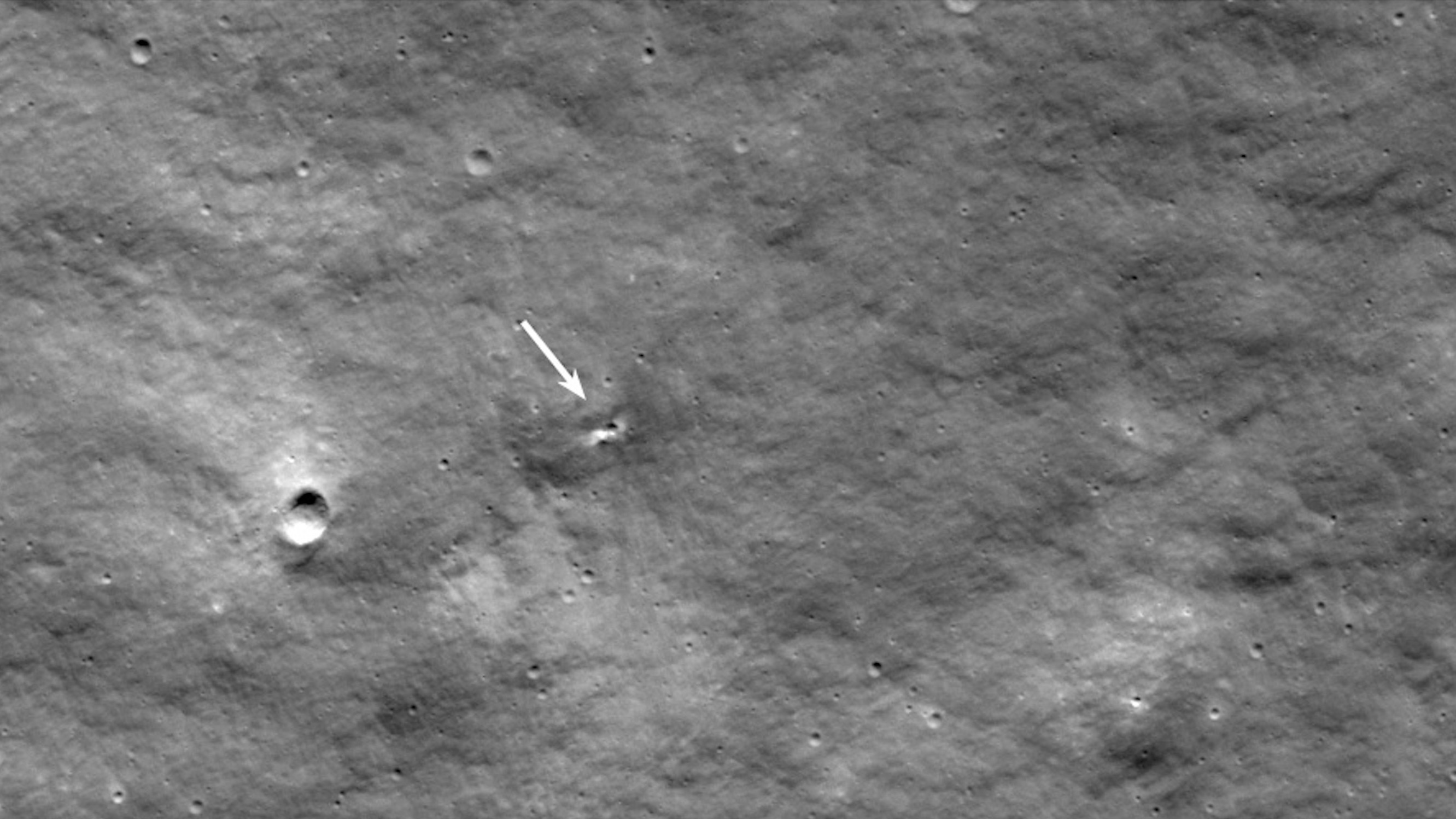NASA moon orbiter spots crash site of Russia's failed Luna-25 lander (photos)

The final resting place of Russia's failed Luna-25 lunar lander has apparently been found.
Luna-25, Russia's first moon probe in 47 years, smashed into the lunar surface on Aug. 19, during a maneuver designed to set up its touchdown try a few days later.
The crash blasted out a crater, which NASA's sharp-eyed Lunar Reconnaissance Orbiter (LRO) likely found last week, agency officials said.
Related: Russia's Luna-25 lunar lander crashes into the moon
LRO's handlers went looking for Luna-25's grave, using an estimated impact site provided by Roscosmos, the Russian space agency.
The LRO team imaged the area with the probe's Lunar Reconnaissance Orbiter Camera (LROC) on Aug. 24, then compared the new photos with pictures of the same region captured previously by LROC, most recently in June 2022. This work revealed a bright, fresh crater on the moon that was gouged out in the past 14 months.
"Since this new crater is close to the Luna-25 estimated impact point, the LRO team concludes it is likely to be from that mission, rather than a natural impactor," NASA officials said in a statement today (Aug. 31) announcing the find.
Breaking space news, the latest updates on rocket launches, skywatching events and more!
The new crater is about 33 feet (10 meters) wide and lies at about 58 degrees south latitude, on the steep inner rim of the moon's Pontécoulant G crater, the statement added. The impact site is roughly 250 miles (400 kilometers) from Luna-25's planned landing site, which lies at 69.5 degrees south latitude.
Luna-25 launched on Aug. 10, kicking off the first Russian moon mission since 1976, when the nation was still part of the Soviet Union. The new mission's name was an attempt to recall those proud bygone days; the 1976 effort, a successful sample-return mission, was called Luna-24.
Luna-25 aimed to become the first probe ever to land softly near the moon's south pole, a region thought to be rich in water ice that could potentially sustain human outposts.
But its failure ceded that mantle to Chandrayaan-3, an Indian mission that launched on July 14 and aced its touchdown on Aug. 23. Chandrayaan-3 is still exploring its polar site with a lander and a small rover, which are designed to operate for a total of one lunar day, or about 14 Earth days. At the end of that period, lunar nightfall is expected to knock both robots out of commission.

Michael Wall is a Senior Space Writer with Space.com and joined the team in 2010. He primarily covers exoplanets, spaceflight and military space, but has been known to dabble in the space art beat. His book about the search for alien life, "Out There," was published on Nov. 13, 2018. Before becoming a science writer, Michael worked as a herpetologist and wildlife biologist. He has a Ph.D. in evolutionary biology from the University of Sydney, Australia, a bachelor's degree from the University of Arizona, and a graduate certificate in science writing from the University of California, Santa Cruz. To find out what his latest project is, you can follow Michael on Twitter.


